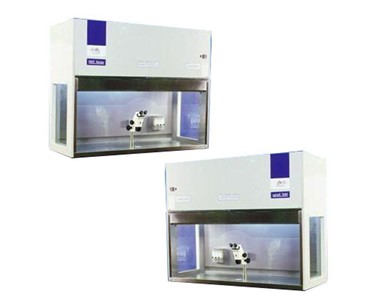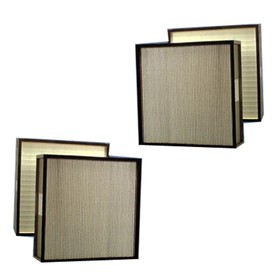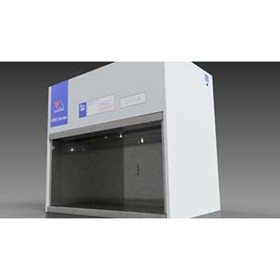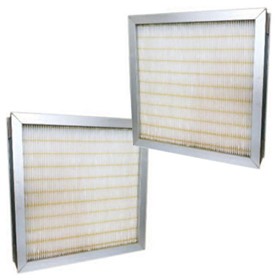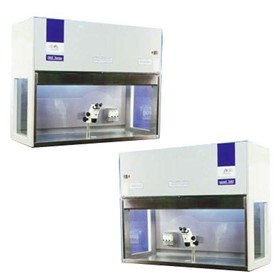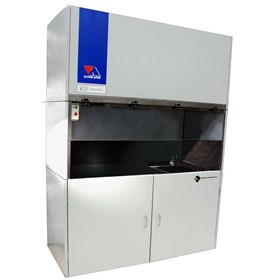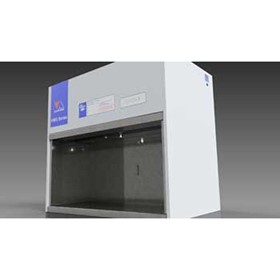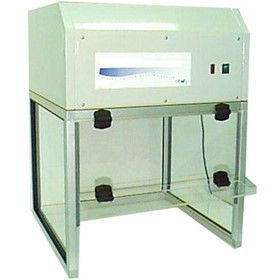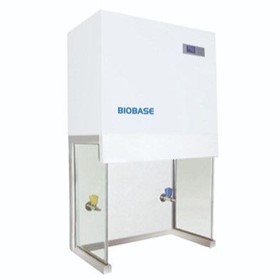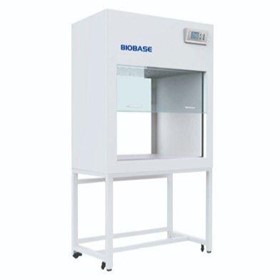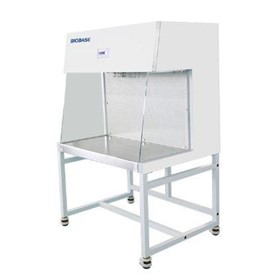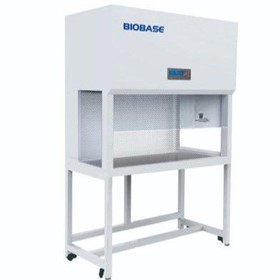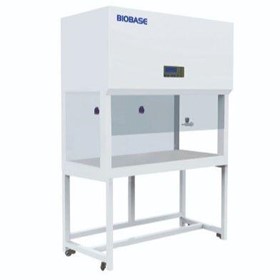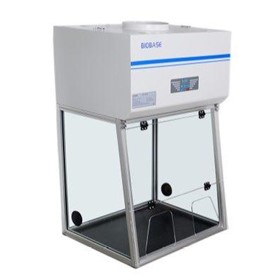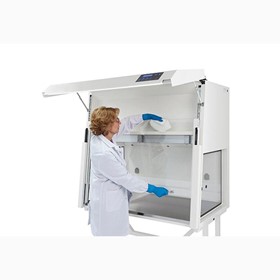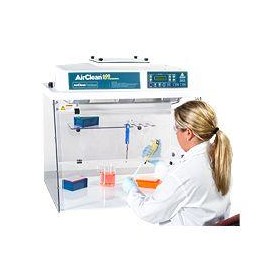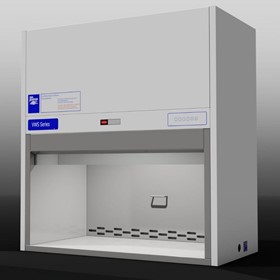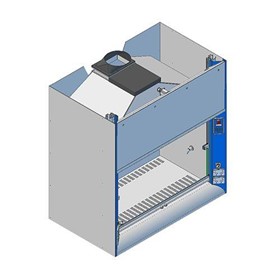Applications :
- A warmed work surface is necessary to prevent thermal shock and, in most applications, provision for use of a microscope within the work zone is required.
- Clyde-Apac’s IVF Series laminar airflow cabinets satisfy these requirements.
Descriptions :
- IVF Series cabinets are laminar flow workstations that are available with work zone width of 90cm, 120cm or 180cm. Internal work height of 80 cm allows effective and comfortable use of a wide range of stereo microscopes.The standard configuration supplied is a cabinet with a special floor stand, and this is the preferred arrangement. An optional configuration for installation on a normal laboratory bench is available, but this increases the internal work height to a point that may compromise ergonomics.
- Heated panels under the stainless steel work surface maintain a temperature of 37.5°C with uniformity within 1°C. The entire work surface is heated except for the perimeter, with markings to delineate the heated area. A digital display mounted on the cabinet control panel indicates the temperature, and an audible alarm signifies any over-temperature condition. A penetration in the work surface and a window for transmitted light allow fitting of a specific stereo microscope that is provided by the cabinet user. The transmitted light source and transformer are located underneath the work surface*. Typically, the microscope penetration is located in the centre of the work zone with alternative locations on the left or right hand side.The user may provide a separate transparent heated stage over the light source.
- Air cleanliness in the work zone is Class 3.5 (Class 100) and each cabinet is factory-tested and certified by a NATA-registered laboratory to establish compliance with the performance requirements of AS 1386, Part 5.
Operation
- Vertical laminar flow in the work zone creates a biologically clean, particle-free work environment. A direct-drive fan draws in ambient air through a prefilter on the top of the cabinet and supplies it to the work zone through a HEPA filter.
- The average vertical air velocity in the work zone is maintained between 0.4 and 0.5 m/s, with all velocity readings within 20% of their average. Air leaving the work zone is divided into two portions.
- Part of the airflow leaves through the work opening, with the balance recirculated to the fan/ HEPA filter system via perforations in the lower section of the work zone. This reduces turbulence in the work zone, and extends HEPA filter service life.
Constructions :
- Cabinet
- The housing is constructed in electro-galvanised steel, etch-primed and finished in special baked enamel that has been developed for laboratory equipment.The work zone is constructed in Grade 304 stainless steel, with safety glass side panels and front viewing window. A removable, washable metal screen protects the HEPA filter from mechanical damage.
- Fans
- A direct-drive fan is regulated by a speed controller to enable airflow to be maintained through filter life. Fans and
filter plenums are designed to provide ultra-quiet operation and low vibration level.
- A direct-drive fan is regulated by a speed controller to enable airflow to be maintained through filter life. Fans and
- HEPA filters
- Clyde-Apac Microseal HEPA filters, which are certified by Quality Assurance Services under Licence No. 2515 to
carry the SAA StandardsMark for compliance with AS 4260. - Each filter is individually certified to achieve efficiency of not less than 99.995% to the stringent BS 3928 Sodium Flame test, and to be leak-free in accordance with AS 1807.6.
- Testing is conducted in a NATA-registered factory laboratory and a NATA-endorsed test label, being an extract of the test report, is affixed to each filter. The positive-pressure filter seal is surrounded by a negative pressure zone, thus enhancing the reliability of the filter installation.
- Clyde-Apac Microseal HEPA filters, which are certified by Quality Assurance Services under Licence No. 2515 to
- Prefilters
- An easily accessed, washable prefilter arrests not less than 90% of particles 5 micron and larger, thus prolonging HEPA filter life. A warning light in the control panel signals the need for prefilter service.
- Electrical
- Cabinets operate on single-phase 240V, 50 Hz power via a 10A outlet. Alternative electrical specification is available for export requirements.A low voltage touch control panel is located on the front of the cabinet with the status of all switched functions indicated by LEDs. An integral fluorescent lamp housing reduces heat build-up near the operator. Glare-free lamps provide a minimum lighting intensity of 800 lux at the work floor.The electrical system complies with Australian Standard AS 3100.
Standard Features
- Heated work surface including electronic controller and digital display
- Mounting frame for light source and transformer
- Window for transmitted light
- Stainless steel work zone
- Partial airflow recirculation
- Low voltage touch controls
- Glare-free fluorescent lighting
- Prefilter service indicator
Customer specification when ordering
The following information is required when ordering a cabinet:
- The cabinet model (size)
- The location of the microscope penetration in the work surface – centre, RHS or LHS
- A full description of the specific microscope and light source (brand and model) that will be used
- Details of any accessories required


